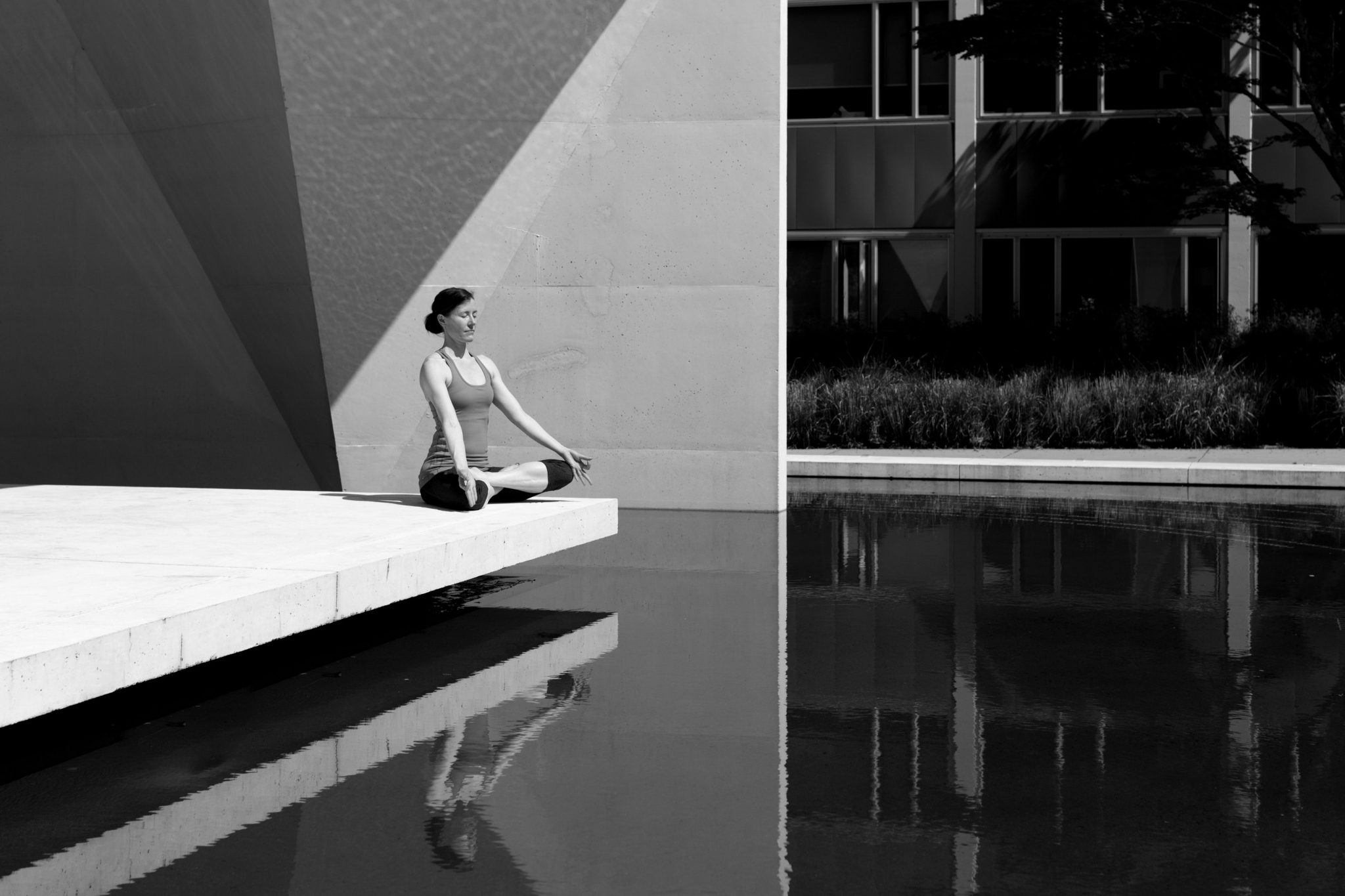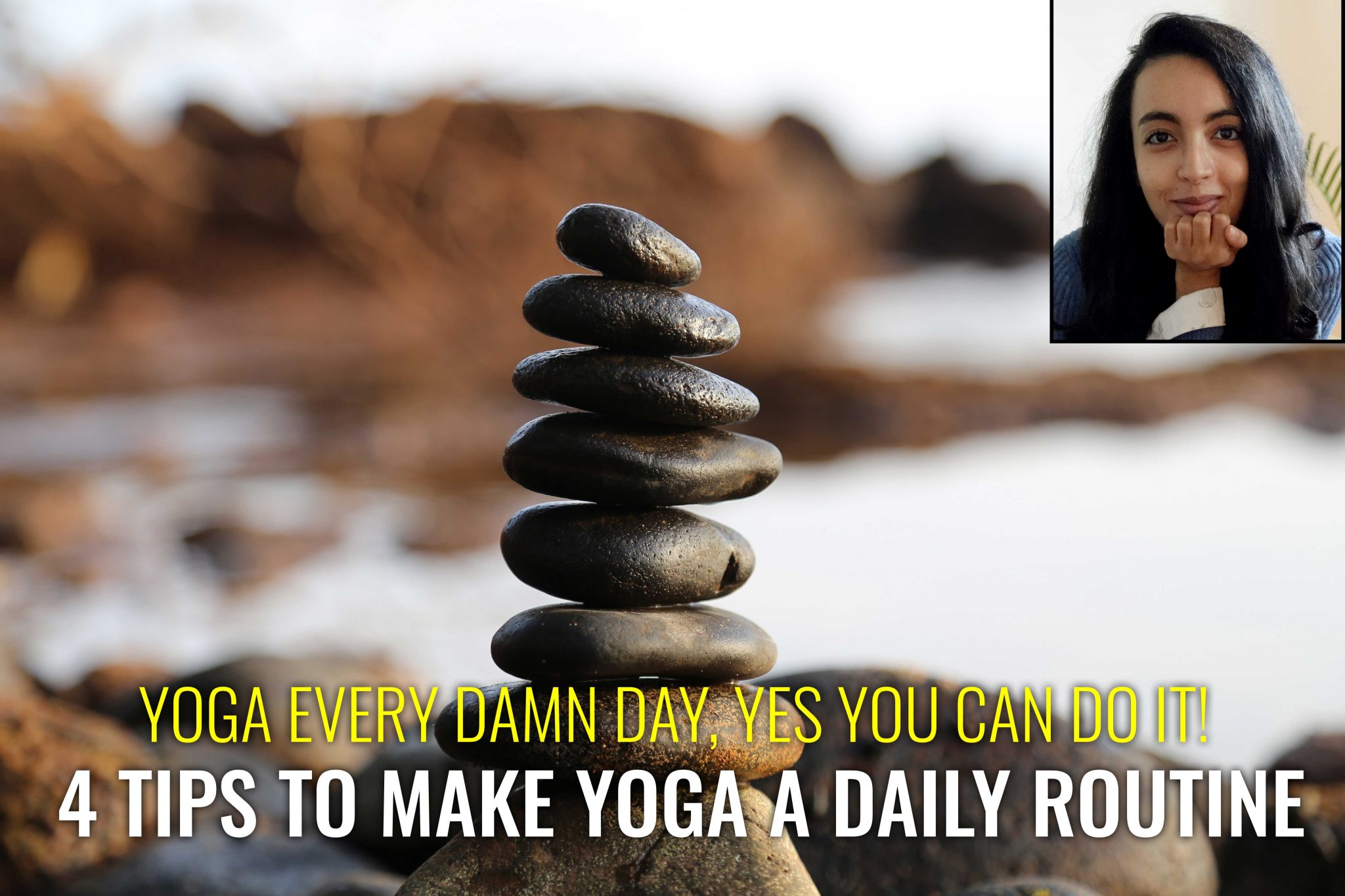You might be interested in yoga because you heard it reduces your stress, relieves anxiety, sharpens your focus or simply because it helps you connect with yourself and improves your quality of life.
Well, these are the reasons why I started doing yoga and finally made it a lifestyle -not only for the flexibility, stress relief, general health, and physical fitness- but also because yoga taught me self-reflection, kindness and self-compassion, presence, patience and self-awareness.
Making of yoga a daily practice is a challenging journey, which led me to spend time thinking about ways to transform a yoga routine from an exercise that needs will power and requires self-motivation to an effortless automatism, a habit Castillos Hinchables that I’d preserve in happiness and sadness, sickness and health, good days and bad ones. To that end, here are some tips that can help build a yoga routine:
1. Link your yoga routine to a trigger and a reward:
Habits are your brain’s way of saving energy, and each habit, like drinking your tea every morning, is a simple 3 part loop: the cue, the routine and the reward.The cue is what triggers you to do the habit, it’s a semi-expected event that identifies strongly with a promised reward if a certain routine is executed. For example hearing your alarm and getting up is the trigger to make your tea.
The routine is the behavior you then automatically engage in, which, for drinking tea, might be to go over to your kettle and turn it on, put some honey, your tea bag and a slice of lemon in a cup before pouring hot water on it.
Lastly, you’ll receive a reward for completing the routine, such as the rich smell of your tea, its sweet/bitter taste, the warmth you feel in your hands holding that cup while you watch the steam rise from your mug in the sunlight.
By doing that repeatedly, the brain stores the reward, the way to get to it and gets triggered to engage in the loop by the cue. Therefore linking your yoga routine with a cue and a reward can help you go on your mat more effectively.
The cue for a yoga routine can be waking up, coming back from work or school, lunch break or after your morning (or evening) shower. Doing yoga after a precise cue repeatedly (and also picturing yourself doing yoga after that cue repeatedly) will help build the habit and you’ll start feeling the need to go on your mat each time the cue is triggered. You can also leave your mattress open in a corner as a reminder and a visual cue to help you engage in your yoga routine.
I like doing my yoga after work, it helps me release the tension of the day. I also end my yoga practice with picturing myself stepping on that mat again the next day after work : I imagine getting home, hoping in comfy clothes and rolling out that mat to celebrate the end of the day and dedicate some time to myself.
The reward can be all the mental and physical benefits that got you to do yoga. I prefer to focus on the short-term benefits and appreciate the calm mind, the undulating breath, the present focus and relaxed body in a Savasana pose (the final relaxation pose). I end sometimes my yoga sessions also with picturing the long-term benefits like always having a healthy, stress-free and energetic life.

2. Kaizen your yoga and set a minimum yoga threshold:
Kaizen is a Japanese change process (Kai means change and Zen means better) of improving a habit using very small steps that lead to big changes.
The main idea of Kaizen is making change come more naturally by taking progressively baby tiny steps (even trivial or laughable steps) . This step-by-step progression disarms the brain’s fear process and keeps the flight-or-fight response off making the new habit take place with less resistance.
So, while you may be excited to jump into a full-fledged yoga routine, the Kaizen way would advise to start small and simple in a way that allows you to build overtime. Whether it’s 5 or 10 minutes a day (that you can do even at your desk or on your bed in the morning) it does make a difference as it affects already your body and mind, starts implementing the habit in your daily routine making 20 or 40 or 90 minutes easier in the future.
Also, while you progress on your yoga routine, remember to set a minimum threshold: I used to get disappointed when a special circumstance (like traveling or catching a flu or just having a busy schedule) prevents me from doing my yoga for a day, or a week or more. It breaks the yoga habit and gives opportunity to old bad habits to rise again, leads to a self-disappointment feeling and makes stepping again on the yoga mat harder.
Therefore, I prefer to set a minimum daily yoga threshold that is doable in any circumstances so I can maintain my habit even in complicated circumstances and avoid that occasional regression. The minimum dose can be 10 minutes seated yoga in your desk chair or even 10 minutes breath work before sleeping to remind you to stay present and connected to yourself and to step on that mat again once you have the chance to do so.
3. Remember that yoga is not a competition:
Watching a yoga instructor effortlessly move through a yoga flow can make it seem easy. However, it can take time to cultivate mindfulness, improve your posture, and to find a practice that works for you personally. So, always keep in mind that the most important thing in yoga or meditation is to feel the present while connecting to your body and breath rather than just trying to make it to the next milestone.
As one of my Yoga teachers used to say: “Tension is where you want to be, relaxation is where you are.”
Yoga is not about getting higher or deeper than yesterday or than others, it’s about getting as deep as it’s good for your body today, and as high as you feel the benefits today.
It’s about creating slightly tiny more space with each inhale and letting go of tensions with each exhale. It’s about getting to know your body, noticing its limits and accepting them. It’s about listening, it’s about going into your own body and asking it to be your teacher. It is a time when you can find your own rhythm. It is where the genuine knowledge arises.
It’s about patience, it’s about presence, it’s about acceptance, it’s about union. It’s an anticipated knowledge of all these damn things we don’t learn usually until life forces us to learn them the hard way.
4. Be accountable to somebody:
Make a dare with a friend, your flat mate or even your mom to be accountable.You can as well practice with a member of your family or a friend. Being held accountable by others can get you to the mat on the dreariest of days. Once you get to the mat, the magic often takes over after a couple of minutes, and you find yourself vibrating effortlessly with the waves of yoga.
Enjoy your practice.

















 Other
Other